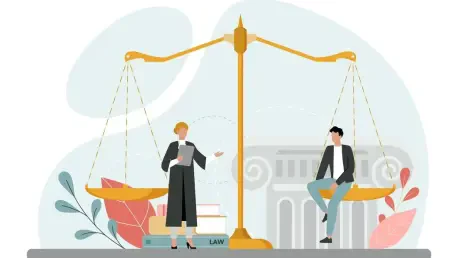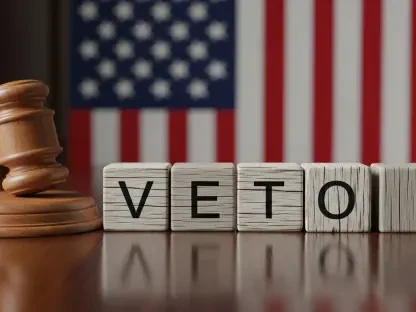Understanding the Role of the NLRB and Federal Labor Law
In a landscape where labor disputes shape the backbone of industrial harmony, the National Labor Relations Board (NLRB) stands as the cornerstone of federal oversight, tasked with enforcing labor laws under the National Labor Relations Act (NLRA). Established to safeguard workers’ rights to organize and engage in collective bargaining, the NLRB plays a pivotal role in mediating conflicts between employees and employers. Its mission is to ensure that labor practices align with national interests, fostering an environment conducive to economic stability across industries.
The NLRA, enacted nearly a century ago, was designed to create uniform labor standards nationwide, aiming to promote labor peace by balancing the interests of workers and management. This federal framework addresses critical aspects such as union activities, unfair labor practices, and bargaining rights, providing a consistent guideline for resolving disputes. Without such standardization, the risk of fragmented policies could disrupt the flow of commerce and labor relations on a grand scale.
Currently, however, the NLRB faces a significant operational hurdle with only one active member, far short of the quorum needed to render decisions or exercise authority. This paralysis has left a void in federal labor governance, raising questions about who fills the gap when national oversight falters. Additionally, the importance of federal control is underscored by the Commerce Clause of the U.S. Constitution, which empowers Congress to regulate interstate commerce, a domain deeply intertwined with labor issues affecting businesses spanning multiple states.
State Actions Amid Federal Inaction
Progressive States Stepping In
Amid the federal vacuum, several progressive states have taken bold steps to assert jurisdiction over labor matters traditionally under NLRB purview. States like New York, California, and Massachusetts have emerged as frontrunners in crafting policies to address labor concerns locally. This shift reflects a growing impatience with federal inaction and a desire to protect workers within their borders.
In New York, a significant development occurred when Governor Kathy Hochul signed a law on September 5, enabling private sector workers to be covered by state labor regulations if the NLRB fails to assert jurisdiction over specific cases. This legislation positions the state as an alternative authority, stepping in where federal mechanisms are dormant. Meanwhile, California has introduced AB 288, a bill that would allow the state’s Public Employment Relations Board to intervene in labor disputes if federal response times are unmet, a measure backed by influential groups like the California Teamsters.
Massachusetts, too, is exploring similar legislative avenues, signaling a potential wave of state-level interventions among progressive regions. These initiatives suggest a trend where states are not merely reacting to federal lapses but are proactively redefining their roles in labor governance. Such actions, while protective in intent, open a broader discussion on the boundaries of state power in a federally structured system.
Motivations and Support for State Intervention
The driving force behind these state actions lies in a pressing need to shield workers’ rights during periods of federal gridlock, a sentiment echoed by labor advocates across the nation. Figures like Lorena Gonzalez of the California Labor Federation have articulated a dual perspective, favoring uniform federal reforms but recognizing the urgency of state-level measures when national action stalls. This pragmatic approach highlights a deep-seated frustration with systemic delays at the federal level.
Unions, particularly in California, have played a crucial role in advocating for these state policies, leveraging their influence to reshape labor dynamics in favor of organized workers. Their support underscores a strategic push to ensure that employee protections do not languish amid bureaucratic stagnation. However, while the intent to safeguard rights is clear, there remains a concern about potential overreach, as state interventions could inadvertently skew the balance of power in labor relations.
Balancing this perspective, it is essential to acknowledge that state actions stem from genuine concern for worker welfare rather than mere political posturing. Yet, the risk of creating disparate standards looms large, potentially complicating the broader labor landscape. This duality of purpose and peril forms the crux of the debate surrounding state involvement in what has historically been a federal domain.
Challenges of State Override on National Labor Standards
The emergence of divergent state labor laws poses substantial logistical and economic challenges, particularly for businesses that operate across state boundaries. Industries such as trucking, which are inherently tied to interstate commerce, face the daunting prospect of navigating a patchwork of regulations, each with unique compliance demands. This fragmentation threatens operational efficiency and increases costs for national enterprises.
Moreover, these state initiatives undermine the uniformity envisioned by the NLRA, which sought to establish a cohesive national policy to govern labor relations. When states impose varying rules, the result is a fragmented landscape that could destabilize the delicate equilibrium between labor and management. Such inconsistency risks creating confusion and conflict, especially in sectors reliant on standardized practices.
Beyond logistics, there is a concern that state laws may disproportionately favor organized labor, potentially marginalizing employers and non-unionized workers. This shift could alter the fundamental balance of labor relations, sparking tensions in industries already grappling with complex dynamics. The broader implications for interstate commerce are equally troubling, as increased operational complexity may deter business expansion and innovation, ultimately affecting economic growth on a national scale.
Legal and Constitutional Dimensions of the Conflict
At the heart of this issue lies a profound tension between state autonomy and federal supremacy, a conflict rooted in the U.S. Constitution’s Commerce Clause, which grants Congress authority over interstate commerce. Labor law, often intersecting with commerce across state lines, has long been recognized as a federal responsibility to ensure consistent application. State attempts to regulate in this space challenge the foundational principle of federal dominance in such matters.
The NLRB has already initiated a legal challenge against New York’s recent labor law, signaling potential battles over similar measures in other states. This opposition reflects a broader effort to preserve the federal framework established by the NLRA, which aims to prevent disparate state policies from eroding national standards. Legal experts argue that allowing states to diverge undermines the very purpose of a unified labor policy, creating a precedent for further fragmentation.
This constitutional debate also raises questions about whether states can legitimately act as fallback authorities when federal mechanisms fail. While state advocates assert a right to protect their citizens, critics maintain that labor’s deep connection to interstate commerce necessitates federal oversight. The ongoing legal discourse will likely shape the boundaries of state power, determining how much leeway states have in the absence of a functioning federal body.
Political Dynamics and the Future of the NLRB
The NLRB’s current dysfunction is deeply entwined with political dynamics, as the agency’s direction often shifts with presidential appointments, reflecting broader ideological battles. Historically, these changes have influenced labor policy, oscillating between pro-worker and pro-business stances based on administration priorities. This politicization has contributed to the present stalemate, leaving the board unable to fulfill its mandate.
Recent nominations of Scott Mayer and James Murphy to the NLRB offer a potential path to restoring quorum to the five-seat board, a critical step toward reviving federal authority. However, the confirmation process through the Senate Health, Education, Labor and Pensions Committee may face delays, prolonging the agency’s paralysis. Such setbacks could embolden further state encroachments, deepening the divide between federal and state roles.
Proposed solutions include appointing members dedicated to legal fidelity and free-market principles, aiming to depoliticize the board’s operations. While some have suggested replacing the NLRB with judicial oversight, this idea remains impractical due to the specialized nature of labor disputes. A restored quorum could decisively curb state overreach, reinforcing federal control over labor policy and setting a precedent for future governance in this critical area.
Conclusion: Balancing State Initiative and Federal Authority
Reflecting on the intricate dance between state initiative and federal authority, the discourse reveals a significant rift exacerbated by the NLRB’s operational challenges. The actions of progressive states like New York and California highlight a proactive stance to protect workers, yet they also expose risks to the national uniformity intended by the NLRA. Legal and economic repercussions for businesses and workers alike underscore the complexity of this evolving landscape.
Looking ahead, actionable steps emerge as vital to resolving this tension. Prioritizing Senate confirmations to restore the NLRB’s quorum stands out as a critical measure to reassert federal oversight and prevent further erosion of labor standards. Additionally, fostering dialogue between state and federal entities could pave the way for interim collaborations that respect both local needs and national consistency.
Ultimately, the path forward demands a nuanced approach, one that values state motivations while championing federal coherence. By addressing the root causes of NLRB dysfunction and encouraging bipartisan commitment to labor governance, stakeholders can ensure a balanced framework. This focus on sustainable solutions promises to safeguard long-term labor peace and economic stability across industries.









